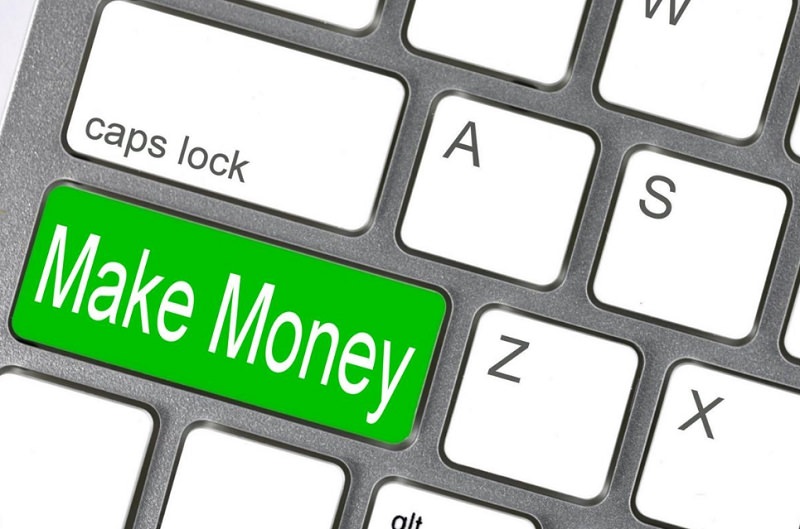DoorDash has become one of the largest and most popular food delivery services in the United States. The on-demand delivery platform connects customers with local restaurants and drivers to provide quick and convenient meal delivery. DoorDash stands out in the crowded food delivery space with its wide selection of restaurant partners – from small mom-and-pop restaurants to national chains. But how exactly does DoorDash, which was founded in 2013, make money?
In this article, we’ll break down DoorDash’s key revenue streams and business model. We’ll explain how the company generates income through delivery fees, commission fees charged to restaurants, subscriptions fees, and more. Read on to learn about the economics behind DoorDash and how this delivery startup has managed to grow so quickly.
What is DoorDash?
DoorDash, founded in 2013 in San Francisco by Tony Xu, Stanley Tang, Evan Moore, and Andy Fang, is the largest food delivery company in the US, capturing a commanding 56% market share. Besides food delivery, DoorDash also dominates the convenience delivery sector, boasting a remarkable 60% market share. DoorDash is a food delivery service that brings meals from local restaurants to your doorstep. You can also order groceries, pet food, and other essentials through DoorDash. The DoorDash app is available for download on both the App Store and Google Play Store. Additionally, DoorDash provides an opportunity for individuals to earn money by delivering orders to customers.
How Does DoorDash Work?
DoorDash functions as a technology intermediary linking customers with restaurants and convenience stores. Through the DoorDash app or website, customers can place orders for food and groceries. DoorDash then engages independent contractors, known as Dashers, to collect and deliver the requested items. To use the DoorDash app, customers follow these steps:
- Click “View cart” to review selected items.
- Add more items if desired.
- Choose immediate delivery or schedule delivery for a later time.
- Opt for group orders by clicking the person plus icon. Additionally, DoorDash offers a subscription service called DashPass, priced at $9.99 per month or $96 annually, providing users with reduced service fees and other perks.
How Does DoorDash Make Money?
The DoorDash app connects customers with local restaurants to have food delivered to their homes. From an outside perspective, the DoorDash business model may appear simple. So how does DoorDash revenue work? Well, as it turns out, delivering food is just one part of a larger business model that DoorDash utilizes.
Commissions
One of the most critical ways that DoorDash makes money is through its commission structure. The food delivery app takes a different approach to commissions; they take a percentage from each order instead of charging a set amount for a delivery fee. DoorDash has three distinct delivery commission price points based on the level of marketing support on a restaurant and the size of its delivery territory. The programs cost 15%, 25%, and 30% commissions for DoorDash partners.
Delivery Service Fees
DoorDash charges restaurants a service fee that includes several different costs. DoorDash does not have minimum order requirements and does not charge additional fees for using a credit card. This service typically ranges from $1.99 to $5.99, depending on the restaurant you choose. DoorDash, like other delivery apps, utilizes surge pricing. Surge pricing kicks in if you place an order during peak times like lunch hour, meaning you might pay more for your meal than usual.
DashPass Subscription
DashPass, a $9.99 monthly subscription, unlocks unlimited delivery on all DashPass orders over $12 and eligible grocery store orders over $25. This subscription makes things more affordable if you plan to order a lot of food from restaurants and want to avoid surge fees. You get a free trial and perks such as priority customer service and DashPass-only specials. When you sign up for DashPass, you’ll be able to use your rewards on both the Caviar service and DoorDash.
Drive
DoorDash has more than two hundred thousand on-demand drivers in about eight hundred cities across the United States and Canada. You pay a one-time, flat cost per order, and DoorDash takes care of the rest. By signing up to DoorDash Drive, business owners have access to a professional delivery fleet without having to worry about logistics. The platform works seamlessly with existing POS systems, such as Square and Toast. DoorDash Drives helps businesses track their orders, reduce delivery costs, and increase revenue.

DashMart
DashMart is a convenience store platform that businesses to deliver retail items and domestic needs to consumers’ doorsteps. Your delivery fleet fulfills orders, so there’s no need to work with a DoorDash driver. You also have complete control over delivery fees and zones. As a merchant or brand, you can sell a variety of convenience, supermarket, and restaurant items, including baked goods and packaged desserts.
Other Revenue Sources
In addition to its core revenue streams, DoorDash generates income through advertisements and corporate catering services. Restaurants and businesses can pay DoorDash to advertise their services within the app, increasing their visibility and attracting more customers. Moreover, DoorDash offers corporate catering services designed for businesses looking to place group orders for their employees. This service typically offers lower prices compared to individual orders, making it an attractive option for businesses. These additional revenue sources further diversify DoorDash’s income streams and contribute to its overall financial success.
How Much Does DoorDash Make?
DoorDash, the renowned food delivery platform, has witnessed significant growth in revenue over the years.
| Year | Revenue(in Billion U.S. dollars) | Net Revenue Margin |
| 2021 | $4.8 | 11.6% |
| 2022 | $6.6 | 11.8% |
| 2023 | $2.0 | 12.8% |
How Much Does DoorDash Make an Hour?
DoorDash drivers typically earn between $15 and $25 per hour. However, actual earnings can vary depending on factors such as dedication, availability, number of deliveries completed, delivery fees, and hours worked. Additionally, DoorDash drivers have the opportunity to earn tips, which can further increase their hourly earnings. For instance, DoorDash’s Earn by Time Mode offers a base pay of $14 per hour for 30 minutes of active delivery, in addition to 100% of any tips received.
How Much Can You Make with DoorDash?
Based on various sources:
- DoorDash drivers have the potential to earn between $15 and $25 per hour on average.
- According to data from Indeed, the average hourly pay for DoorDash drivers is approximately $16, while ZipRecruiter suggests it’s around $19.
- Drivers receive a fixed delivery fee for each completed order, and their hourly wage is calculated based on the total earnings from delivery fees and the duration of their work shift.
- Drivers have the flexibility to toggle between hourly and per-delivery pay arrangements as often as they prefer.
How to Get Free DoorDash?
To attract and retain customers, DoorDash offers various promotions and discounts. Here are some ways:
- New Customers: New customers receive free delivery on orders exceeding $10. Additionally, they can avail of free delivery on their first order.
- DashPass: DashPass is a subscription service offering unlimited deliveries from eligible restaurants with no delivery fee on orders surpassing $12. DashPass subscription costs $9.99 per month and is accessible in the United States and Canada. To enroll, users can open the DoorDash app and locate the DashPass banner on the home screen.
- DoorDash Rewards Mastercard: Apply for the DoorDash Rewards Mastercard to enjoy a complimentary year of DashPass, waived delivery fees, cashback, and other exclusive offers.
- Swagbucks: Register for free using an email and password, earn 4750 SB by completing surveys, and redeem points for a $50 DoorDash gift card.
- Referrals: Refer friends and family to DoorDash to benefit from new customer perks.
- Promotions: Regularly check the DoorDash promotions page for special discounts and deals, including free items.
- Photo Incentives: Certain DoorDash users may earn account credits by sharing a photo of an eligible menu item.
Wrapping Up
All in all, this company has leveraged its technology platform to become a leader in the food delivery space. The company generates revenue through multiple streams including commissions, service fees, DashPass subscriptions, Drive catering, and DashMart convenience delivery. DoorDash reported over $6.6 billion in net revenue in 2022, representing impressive growth.
While DoorDash faces competition from rivals like Uber Eats and Grubhub, its large market share and diversified business model position it for continued success. The on-demand delivery model seems here to stay, and DoorDash is poised to remain a dominant force as consumer demand for convenient food delivery options continues to rise. Though facing challenges, DoorDash has proven adept at adapting its offerings and capitalizing on emerging opportunities in the dynamic delivery marketplace.

Neil Duncan, a professional in business innovation and management, has a deep interest in writing and sharing his voice by publishing articles on different b2b and b2c websites/blogs like this. He currently serves as the Vice President in AZ.












